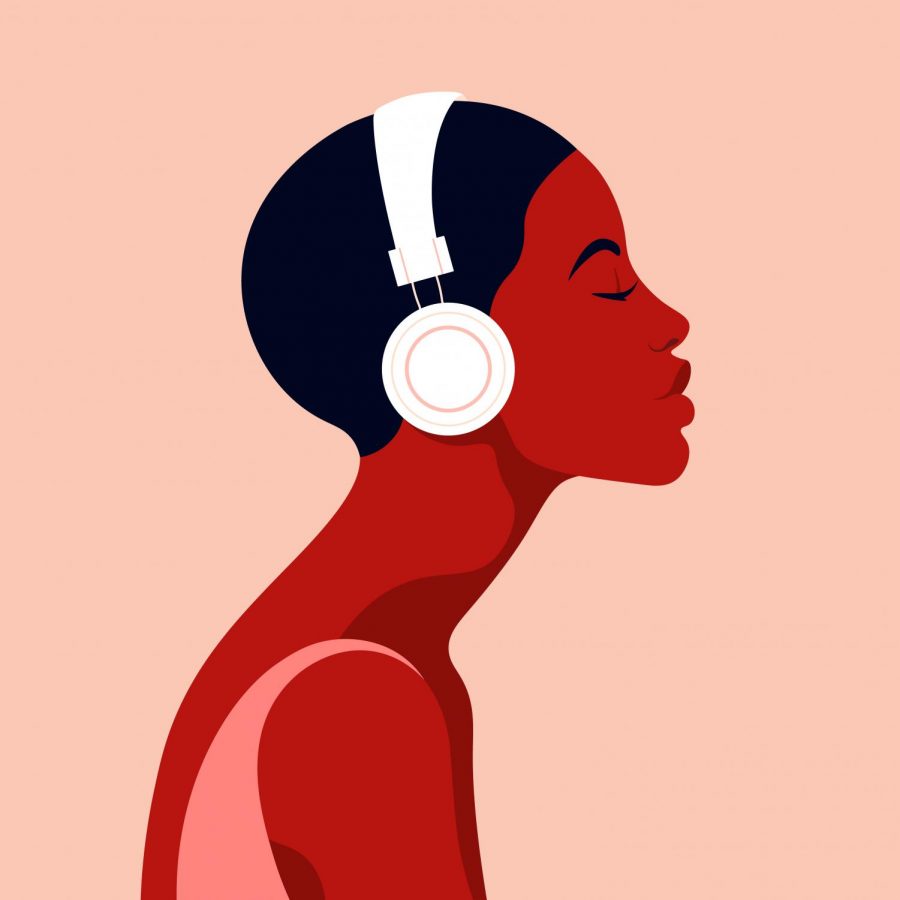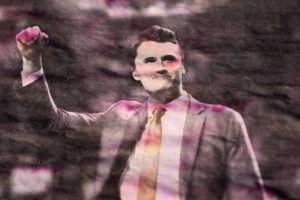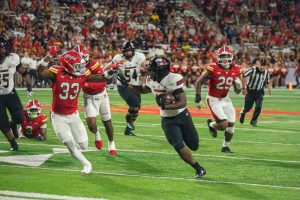Iann Dior’s album “I’m Gone” brings pain to pop
June 17, 2020
21-year-old rapper Iann Dior released his second studio album, “I’m Gone” on Friday consisting of nine songs that reached the number 1 pop album in the world by Saturday. Delivering a stony mix of feel good, powerful songs and music to blast while getting over someone or through something — he produced the perfect summer album.
Staying true to his signature sound with this album, Dior writes on his trial and errors. As an emo rapper in a newer sub-genre of rap, he proves emo music can be as indulging as rap by allowing others to relate to his pain without getting them too into their feelings.
Seeing number one for an album that pours out of the typical pop mold is a huge deal. Dior made his first splash in 2019 after he changed his stage name from Olmo to Iann Dior and was discovered by a new record label in 2018. He dropped his mixtape under his new persona, “Nothing’s Ever Good Enough” in April 2019, then came in fast with “Industry Plant,” his first studio album, seven months later in November 2019.
His top song on Spotify, after three projects, remains “Emotions” off of his mixtape, with over 118 million streams.
His first album featured hit artists like rapper Trippie Redd and Blink-182 drummer Travis Barker. Barker returned on one of the singles for “I’m Gone”, called “Sick and Tired”, also featuring rapper Machine Gun Kelly. Barker has acted as an asset for many artists. Coming in with tailored drum solos to fit an artist’s lyrics and rhythm, Barker has become every emo rapper’s chameleon, and missing piece to the puzzle. He certainly came in clutch with this song.
“I’ve been losin’ my mind tryna figure it out/But I’m stuck in a drought, I guess I’ll start again,” Dior starts in the chorus he shares with MGK. Released during the stay-at-home order, the music video is set in a house, as the three try to escape, going in and out of rooms and watching the COVID-19 germ outside of their window. “But I’m stuck in this house,” MGK raps. Being trapped in the house, endlessly weaving in and out of rooms just to land in the same place could be a visual representation of what it’s like getting sober, and falling into the same habits. It’s the state of feeling trapped and ending up in the same place again and again.
“Lately, I know I’ve been a punk and I need to sober up,” Dior raps early in the song. And MGK comes in later with, “I’m not sober again, but I’m tryna pretend/Like everything’s alright but it’s over with.”
Using social distancing as the scene for a more upbeat emo rap song like this not only draws in a larger following of listeners who are also sick and tired of being in the house, but on some level subliminally allows them to understand that addiction can feel the same without having gone through it.
While “Sick and Tired” is a catchier song, Dior also raps about using drugs as a successful young musician who’s living fast and never going back home, in a more vulnerable and honest way. “I get high sometimes, it gets lonely at night/I just can’t help it, I don’t do it on purpose, no,” he sings in “Runaway Kid.” For a number one pop album in the world, the rap songs Dior produces are diverse, as he talks about experiences and emotions many may not have dealt with themselves but can jam to nonetheless. Being a versatile artist, anyone who listens can escape their head and relate or simply vibe although they may not understand.
Although the life of money, drugs and babes is considered a glamorous lifestyle in rap, and one many like to hear about, Dior isn’t afraid to expose why he takes drugs, his battles and the war he’s constantly in as he stumbles in and out of using drugs all while living life to the fullest.
“Now everyone’s the same, like a sickness to my brain/I won’t let ’em get me,/I won’t sell my soul/I’ma let ’em hear my pain, sell it for a Patek wrist,” Dior raps in the Chorus of “Sickness.” The reason why emo rap made such a large and in charge appearance is because writing off regrets attracts a crowd of gen-z teens and young adults who normalized talking about mental illness, and the forever scars that heartbreak leaves. But while it’s rap, it’s not rap many prefer. With Dior’s clever features on this album, such as Lil Baby, Barker and MGK, there are sad songs, but catchier ones too, because life isn’t all sad. That way, it reaches almost all of the rap listeners with an unfiltered lense many can recognize, but don’t typically hear.
Although the album cover does not illustrate any themes in the lyrics to represent this album, the silhouette of Dior’s face doesn’t expose the sadness in his eyes that he pours out into almost all nine songs, or bags that reveal sleepless nights. Written on any face is a million stories told by ancestors and the person’s own hardships. Only by listening to Dior’s music can one begin to understand his experiences in life with love, fame and loss and his perception of himself. With no face or art, nothing can be assumed until the full picture is painted in Dior’s music. As far as anyone can tell by the cover, his mind is vacant. Behind his silhouette is a reddish, orange wall and a yellow stripe over his eyes. Before every dark night is a beautiful sunset, and although life for a rockstar can be paradise, as he expresses in his music, night always falls and suddenly the mind isn’t so vacant.
Dior has this emotionless messiness in his eyes in every picture, behind his dangling dreads and hand positioned over his mouth, leaving only his sad eyes. But his presence is much different than emo icons Lil Peep or Travis Barker. He has the image and flow of a rapper, stunting with his sneakers and flashy new chains, but instead of a trap beat or drill music, he’s adding an upbeat and catchy rhythm to pair with his indulging and truthful lyrics. It’s emo rap, but with a flair radio stations and mainstream music are used to, without being done before. Hence being a #1 pop album. Dior doesn’t sugar coat his life, and he honestly could have you crying in the club or on the couch.
Slowly but surely Dior is claiming a spot for emo rap by laying down a cushion of sounds most are used to, for an unstoppable dance floor underneath.







